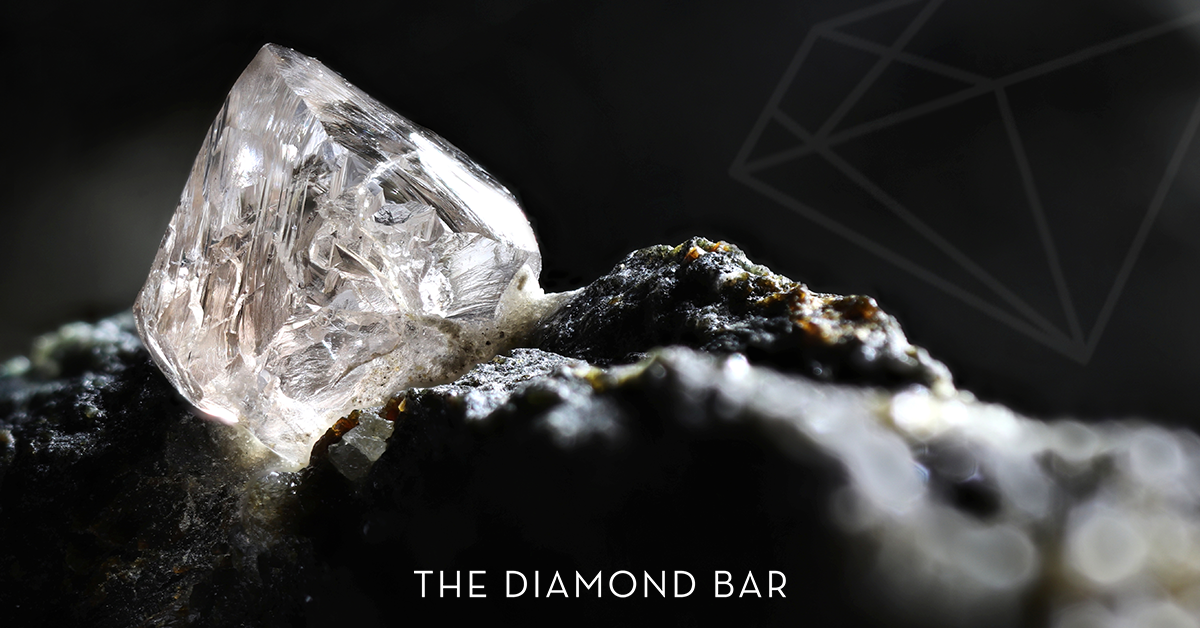Some Clarification on the Subject of Clarity
Diamonds have been a symbol of love and commitment for centuries, and it doesn’t look like that’s changing anytime soon. But as global perspective and technology evolve, so does our collective perception of traditional ideas.
Today, when it comes to purchasing a diamond, there are two options to consider: natural diamonds or lab-grown diamonds. Lab-grown diamonds, however, are not yet seen as a comparable replacement for natural diamonds, despite their growing popularity.
Let’s explore a few reasons why natural diamonds are still preferred over lab-grown diamonds:
-
Natural Diamonds are Rare
Natural diamonds edge out lab-grown diamonds when it comes to rarity. Formed deep within the earth, natural diamonds are incredibly difficult to source, making them more valuable and sought after. According to the Gemological Institute of America (GIA), natural diamonds are one of the most precious gems in the world, and their rarity is what makes them so valuable.
2. Natural Diamonds are Unique
Another reason why natural diamonds are still more popular than lab-grown diamonds is their unique characteristics. Lab-grown diamonds may have similar physical and chemical properties to natural diamonds, but they lack the unique characteristics that make natural diamonds so special.
Natural diamonds are formed under intense heat and pressure over millions of years, so they have unique patterns and colorations that are not found in manufactured, lab-grown diamonds. These unique characteristics, also called inclusions, make natural diamonds one-of-a-kind and truly special.
Inclusions are natural variations created during the diamond's formation process. They typically can be seen as small crystals, clouds, or feathers, and each natural diamond has its own unique inclusions that make it distinctly beautiful.
Lab-grown diamonds, on the other hand, are created in a simulated, accelerated lab environment. The base of a lab-grown diamond is often a piece of an inferior diamond. The diamond is exposed to carbon gas & pressure-cooked at 2,500 degrees Fahrenheit and 825,000 pounds per square inch to bond the carbon to the diamond. The lab-grown diamond is then irradiated to match the color of the original diamond.
With supporting research from the GIA, which states that natural diamonds have unique characteristics that cannot be replicated in lab-grown diamonds, you can be assured that your natural diamond - like the person who wears it - is like no other.
3. Natural Diamonds are Environmentally Friendly
Diamond mining once had a reputation for being harmful to the environment, but responsible diamond mining practices have been implemented in recent years to minimize the environmental impact.
According to research by the International Gem Society, standards for ethical and environmentally friendly mining practices, dubbed the Kimberly Process, have been implemented by 80% of diamond-trading nations, including the U.S. This coalition of trade partners have agreed to only trade diamonds with each other, which has elevated and upheld the ethical standards in the international diamond industry.
The same progress hasn’t been made for lab-grown diamonds. While many people think they are sustainable and “green”, that’s not necessarily the case. The Federal Trade Commission had to warn lab diamond suppliers not to advertise their lab diamond jewelry as sustainable without backing it up. The average energy cost of producing 1 carat of lab-grown diamonds is about 380 kWh – more than the average American household uses in an entire week.
4. Natural Diamonds are Historically Significant
Natural diamonds have a historical and cultural tenure that lab-grown diamonds simply cannot match. Natural diamonds have been used in jewelry for centuries and have been a symbol of love and commitment for just as long, marking status, royalty, and celebrity.
5. Natural Diamonds are a Better Investment
The value of a natural diamond is determined by the Four Cs: carat weight, clarity, color, and cut. These factors impact value significantly, and the value of a natural diamond is often higher than that of a lab-grown diamond of similar characteristics. This makes natural diamonds a better investment for those looking to buy for value.
Lab-grown diamonds, on the other hand, have only decreased in value since their conception. When they became readily available on the market, lab-grown diamonds were competitively priced just under natural diamonds – about 20% less. Over the decades, mass-production has decreased their value to 40-50% of a natural diamond. It’s likely that, in time, lab-grown diamonds will be valued similarly to cubic zirconia: much closer to costume jewelry than the real thing. Natural diamonds, on the other hand, don’t suffer at the hands of supply-and-demand; they benefit from it. The finite nature of real diamonds allows them to retain their value.
Although lab-grown diamonds have sparked discussion and attempt to replicate the beauty of natural diamonds, natural diamonds are still the preferred investment due to their rarity, unique characteristics, ethical sourcing, and historical significance.




